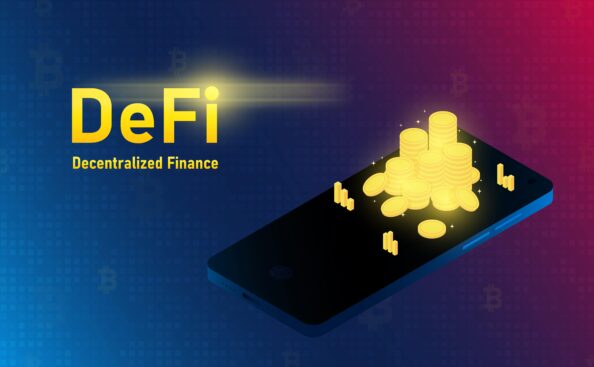
DeFi lending is one of the most popular services offered by the Decentralized Finance (DeFi) industry. It enables users to lend and borrow digital assets without the need for intermediaries such as banks or financial institutions. DeFi lending operates on a peer-to-peer network, where lenders and borrowers can interact with each other directly, without any centralized authority. In this article, we will explore how DeFi lending works, the benefits it offers to users, and the risks associated with it. We will also look at some of the popular DeFi lending platforms and how they operate.
DeFi, or Decentralized Finance is a financial system that operates on a decentralized network using blockchain technology, which allows for peer-to-peer transactions without intermediaries like banks and financial institutions. DeFi brings together various financial services such as lending, borrowing, trading, and investing, which can be accessed by anyone with an internet connection, without requiring permission from a centralized authority.
The beauty of DeFi lies in its ability to democratize financial services, making them accessible to everyone, regardless of their geographical location or social status. DeFi enables individuals to have control over their financial activities, without having to rely on intermediaries, which increases transparency and security in financial transactions.
The DeFi industry has grown exponentially, and its total value locked has surpassed $120 billion as of 2021. The industry has introduced new concepts such as yield farming, liquidity mining, and staking, which have attracted many investors and users.
DeFi lending is a decentralized lending service that allows users to lend and borrow digital assets without intermediaries such as banks or financial institutions. In DeFi lending, users can lend their assets to others in return for interest, or they can borrow assets by putting up collateral. This process is facilitated by smart contracts, which are self-executing contracts with the terms of the agreement between the borrower and lender encoded in code.
DeFi lending provides several benefits to users, including access to capital without requiring a credit score or a bank account, lower interest rates compared to traditional lenders, and faster transaction time. DeFi lending is accessible to anyone with an internet connection, making it an attractive option for individuals and small businesses globally.

DeFi lending and traditional lending are two vastly different systems for borrowing and lending capital. Traditional lending is a well-established system where banks and other financial institutions serve as intermediaries between borrowers and lenders. On the other hand, DeFi lending is a decentralized system that operates on a peer-to-peer network and uses smart contracts to facilitate lending and borrowing.
DeFi provides access to capital without requiring a credit score or a bank account. This is particularly beneficial for individuals and small businesses that may not meet the requirements of traditional lenders. Furthermore, DeFi lending offers faster transaction times due to the absence of intermediaries, and lower interest rates compared to traditional lending. Additionally, DeFi lending is accessible to anyone with an internet connection, making it more inclusive and democratic than traditional lending.
In contrast, traditional lending has a long history of regulation and oversight, which helps to ensure that borrowers and lenders are protected. Banks and other financial institutions also have a large pool of capital, which means that they can provide larger loans than most DeFi platforms. Additionally, traditional lenders offer a wider range of financial services, including investment advice, insurance, and wealth management.
Both DeFi lending and traditional lending have their pros and cons, and each system is suited to different types of borrowers and lenders. As the DeFi industry continues to grow and mature, it is likely that it will become a more viable option for borrowers and lenders alike.
The growth of the DeFi lending industry has raised concerns among regulators and policymakers about the potential risks associated with this decentralized and unregulated financial service. The lack of oversight and regulation in the DeFi industry has led to several instances of fraud, hacks, and scams, which have resulted in significant financial losses for users.
One approach that regulators are exploring is to impose regulations on the intermediaries that provide services to the DeFi industry, such as wallet providers, custodians, and exchanges. This would enable regulators to enforce compliance with traditional regulations, such as KYC and AML, on these intermediaries, which would in turn help to mitigate the risks associated with DeFi lending.
Another approach that regulators are exploring is to create new regulations that are specifically designed for the DeFi industry. This would involve working with industry stakeholders to develop a regulatory framework that is tailored to the unique characteristics of DeFi lending, such as its decentralized nature, the use of smart contracts, and the absence of intermediaries.
Regardless of the approach taken, it is clear that DeFi lending will need to be regulated in some form to ensure that users are protected from the risks associated with this innovative financial service. However, regulators must strike a balance between protecting users and fostering innovation in the DeFi industry. If done correctly, regulation can help to build trust and credibility in the DeFi industry, which can lead to further growth and adoption.

As the DeFi lending industry continues to grow, it is important to understand the tax implications of borrowing and lending digital assets on decentralized platforms. Like traditional lending, DeFi lending involves the payment of interest, and the interest earned from DeFi loans may be subject to taxes.
For borrowers, interest payments on DeFi loans are generally tax-deductible, meaning that they can be deducted from the borrower’s taxable income. However, borrowers must have a record of the interest payments made on their DeFi loans to claim the tax deduction. Borrowers may also be subject to taxes on the capital gains or losses resulting from the appreciation or depreciation of the collateral they put up for their loans.
For lenders, the interest earned on DeFi loans is considered taxable income and must be reported on their tax returns. Lenders must keep a record of the interest earned on their DeFi loans, as well as any capital gains or losses resulting from the appreciation or depreciation of the collateral they hold. Lenders may also be subject to taxes on the transaction fees they pay to the DeFi platform.
One of the challenges of taxation in the DeFi industry is the lack of clear guidance from tax authorities. The IRS in the US and other tax authorities around the world are still grappling with how to apply existing tax laws to digital assets, including those used in DeFi lending. This has led to confusion and uncertainty for users of DeFi lending platforms, who may be unsure of their tax obligations.
To address this, some DeFi lending platforms have started to provide tax reporting services to their users. These services provide users with a record of their transactions, interest earned, and other relevant information that they can use to calculate their taxes. Some DeFi platforms have also started to work with tax experts to provide guidance to their users on how to comply with tax regulations.
It is important for users of DeFi lending platforms to keep accurate records of their transactions, interest earned, and collateral held, as well as to seek professional advice on their tax obligations. Failure to comply with tax regulations can result in penalties and fines, which can outweigh the benefits of using DeFi lending platforms.
Lending and borrowing in DeFi is a popular use case that has emerged in the decentralized finance ecosystem.
In DeFi lending, borrowers can take out loans by using their digital assets as collateral. The amount of the loan is typically based on the value of the collateral, and the interest rate on the loan is determined by the market demand for the borrowed asset. Borrowers can use the loaned funds for a variety of purposes, such as buying more digital assets or funding their businesses.
Lenders, on the other hand, can earn interest on the funds they lend out to borrowers. Lenders can choose which assets to lend and at what interest rate, depending on their risk tolerance and investment goals. Lenders also have the option to withdraw their funds at any time, as long as there are no active loans using their funds as collateral.
One of the main advantages of DeFi lending is its accessibility. Anyone with a digital wallet and internet connection can participate in DeFi lending, regardless of their location or credit history. This opens up lending and borrowing opportunities to a wider range of individuals and businesses who may not have access to traditional lending services.
Another advantage of DeFi lending is its transparency. All transactions in the DeFi lending ecosystem are recorded on a public blockchain, which enables anyone to verify the integrity of the lending and borrowing process. Smart contracts also ensure that the terms of the loan are enforced automatically, without the need for intermediaries.

To take out a DeFi loan, a borrower first needs to select the digital asset they wish to use as collateral. This can be any asset that is accepted by the lending platform, such as Bitcoin, Ethereum, or stablecoins like USDC or DAI. The borrower then deposits the collateral into a smart contract, which acts as a secure escrow account.
Once the collateral is deposited, the smart contract automatically calculates the maximum amount of funds the borrower can borrow based on the current value of the collateral. This is called the loan-to-value ratio (LTV). For example, if the LTV is 50%, and the borrower deposits $10,000 worth of Bitcoin as collateral, they can borrow up to $5,000.
The borrower then submits a loan request, specifying the amount they wish to borrow and the term of the loan. The interest rate on the loan is determined by the market demand for the borrowed asset and can vary based on supply and demand. The borrower then signs the loan agreement, which is recorded on the blockchain and cannot be altered.
Once the loan is approved, the borrowed funds are transferred to the borrower’s digital wallet, and the collateral remains locked in the smart contract until the loan is repaid. The borrower can use the loaned funds for a variety of purposes, such as investing in more digital assets, buying goods or services, or funding their business.
The borrower must repay the loan plus interest within the agreed-upon term. If the borrower fails to repay the loan, the smart contract automatically liquidates the collateral to recover the funds. This is done to protect the lender’s investment and ensure that the smart contract has enough funds to repay any outstanding loans.
Lenders, on the other hand, earn interest on the funds they lend out to borrowers. Lenders can choose which assets to lend and at what interest rate, depending on their risk tolerance and investment goals. Lenders also have the option to withdraw their funds at any time, as long as there are no active loans using their funds as collateral.
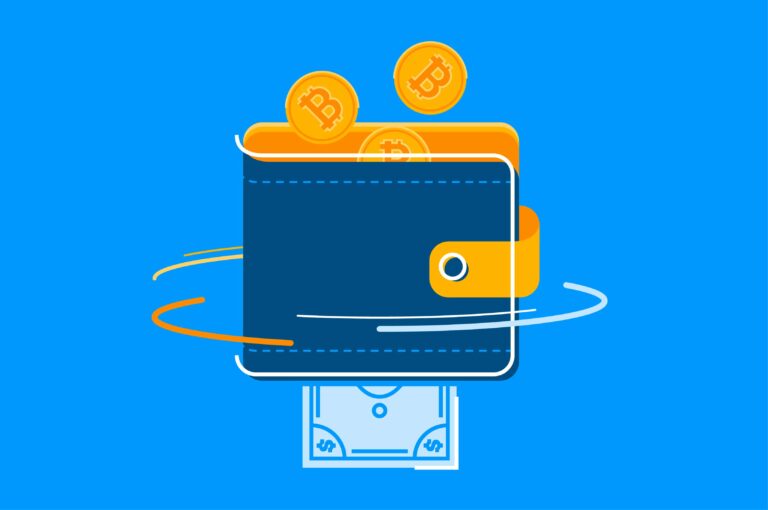
Lending protocols are a type of decentralized finance (DeFi) application that enables users to lend and borrow digital assets without the need for intermediaries. These protocols use smart contracts to automate the lending and borrowing process.
Lending protocols operate on a peer-to-peer basis. Users can choose which digital assets to lend and borrow, as well as the terms of the loan, such as the interest rate and repayment period. The protocols use algorithms to match lenders and borrowers based on their preferences, and the smart contracts ensure that the terms of the loan are enforced automatically.
When a user deposits digital assets into a lending protocol, they are effectively lending those assets to other users who want to borrow them. The lending protocol uses algorithms to match lenders with borrowers, based on factors like the loan amount, interest rate, and risk profile. Once a match is found, the borrower can withdraw the loaned digital assets, and the smart contract ensures that the agreed-upon interest rate is paid to the lender.
There are different types of lending protocols, each with their own unique features and benefits. For example, some protocols offer variable interest rates that adjust based on market demand, while others offer fixed interest rates that remain constant over the loan term. Some protocols allow users to earn rewards or fees for participating in the lending process.
DeFi lending protocols use blockchain technology and smart contracts to automate and streamline the lending process. This means that borrowers can apply for loans quickly and easily, without the need for intermediaries, resulting in faster loan origination times.
DeFi lending protocols provide detailed analytics and data insights that enable lenders to make informed decisions about lending and risk management. These analytics can include borrower creditworthiness, collateral valuation, and loan performance data.
DeFi lending protocols are designed to comply with all applicable regulations at the federal, state, and local levels. This includes Know Your Customer (KYC) and Anti-Money Laundering (AML) requirements, as well as regulations governing lending practices.
DeFi lending protocols provide detailed analytics and data insights that enable lenders to identify areas for process improvement and optimize their lending portfolios for profitability.
DeFi lending protocols are permissionless, meaning that anyone with a digital wallet and internet connection can participate in lending and borrowing without the need for intermediaries or approval from centralized authorities.
All transactions on the blockchain are publicly recorded, ensuring transparency and accountability in the lending and borrowing process. This means that lenders and borrowers can see the terms of the loan and the collateral used to secure it.
Transactions on the blockchain are immutable, meaning they cannot be altered or deleted. This ensures that the terms of the loan are enforced automatically, eliminating the need for intermediaries.
Smart contracts used in DeFi lending protocols are programmable, meaning that lenders can set up custom loan terms and conditions. This enables lenders to offer a wider range of loan products and tailor them to the needs of specific borrowers.
DeFi lending protocols are designed to be interoperable, meaning that they can integrate with other DeFi protocols and platforms. This enables lenders to access a wider pool of borrowers and collateral assets.
DeFi lending protocols enable borrowers to maintain custody of their own assets, meaning they are not held by intermediaries or centralized authorities. This reduces the risk of loss or theft of collateral assets.
Transactions on the blockchain are publicly recorded and transparent, ensuring that all parties involved in the lending and borrowing process are held accountable for their actions. This reduces the risk of fraud and misconduct in the lending and borrowing process.
DeFi lending protocols operate on a decentralized blockchain network, meaning that transactions can be processed quickly and efficiently without the need for intermediaries or centralized authorities. This results in faster loan origination times and quicker access to funds for borrowers.
DeFi lending platforms are relatively new and untested, which creates uncertainty for both borrowers and lenders. The lack of a track record can make it difficult for users to determine the level of risk involved in using these platforms.
As the popularity of DeFi lending grows, the platforms may struggle to handle the increased volume of transactions. This can lead to slower transaction times and higher fees.
DeFi lending platforms rely on a decentralized network of users to provide liquidity and manage risk. This shared responsibility can create challenges in terms of governance and decision-making.
One of the key challenges for DeFi lending platforms is maintaining sufficient liquidity. If there are not enough lenders or borrowers using the platform, it can be difficult to maintain the supply and demand balance required for a healthy lending ecosystem.
While DeFi lending platforms are designed to operate without centralized authorities or intermediaries, they are still subject to regulatory frameworks. The lack of clarity around how these platforms will be regulated in the future creates uncertainty for both users and platform operators.
As with any financial system, security is a major concern for DeFi lending platforms. If the platforms are not designed with robust security features, they can be vulnerable to hacks and theft.
While interoperability is a benefit of DeFi lending platforms, it can also be a constraint. If different platforms are not able to work together seamlessly, it can create barriers to entry and reduce the overall liquidity of the system.
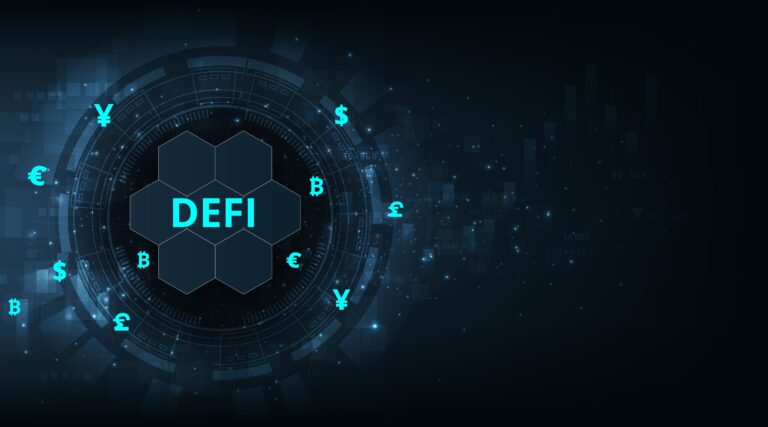
Decentralized finance (DeFi) lending platforms have the potential to revolutionize the traditional financial services sector by offering new and innovative solutions to long-standing problems.
One of the main benefits of DeFi lending platforms is that they offer a more efficient way to lend and borrow money. These platforms allow borrowers to access capital without going through traditional intermediaries, such as banks or other financial institutions. This can be especially beneficial for individuals and businesses who have been denied credit by traditional lenders.
DeFi lending platforms also provide new ways for individuals to save and earn interest on their holdings. By lending their assets to borrowers on the platform, users can earn interest on their holdings. This is often done through the use of smart contracts that automate the lending and borrowing process.
DeFi lending platforms have also helped to popularize stablecoins, which are digital assets that are designed to maintain a stable value relative to a particular currency or asset. Stablecoins can be used to facilitate lending and borrowing on DeFi platforms, as they provide a more stable store of value than other cryptocurrencies like Bitcoin or Ethereum.
DeFi lending platforms offer new ways for individuals and institutions to manage their assets. Through the use of smart contracts, users can automatically manage their investments, including the lending and borrowing of assets.
DeFi lending platforms often include decentralized exchanges (DEXs) that allow users to trade digital assets without the need for a centralized intermediary. DEXs offer several benefits, including improved transparency and lower transaction fees.
DeFi lending platforms are also exploring ways to offer insurance products to users. These products can help protect users from losses due to hacks, smart contract failures, or other types of risks.

Maker is one of the earliest and most well-known DeFi lending platforms. It is a decentralized autonomous organization (DAO) that operates on the Ethereum blockchain, and it allows users to generate Dai, a stablecoin pegged to the US dollar, by locking up collateral such as Ethereum or other digital assets. The platform uses a system of smart contracts and oracles to ensure that Dai remains stable, and users can earn interest on their holdings by lending them out to borrowers.
The Maker platform also employs a unique governance system, where users who hold Maker’s native token, MKR, can vote on changes to the protocol, allowing for decentralized decision-making and ensuring that the platform remains community-driven.

Aave is a decentralized lending and borrowing platform that operates on the Ethereum blockchain. It allows users to lend and borrow a wide variety of digital assets, including cryptocurrencies and stablecoins. Aave uses a unique system of flash loans, which are uncollateralized loans that must be repaid within the same transaction block, to enable fast and efficient lending and borrowing.
Aave also offers users the ability to earn interest on their deposited assets, which can be a valuable source of passive income. Interest rates are determined by supply and demand, and can vary depending on the asset and market conditions. The platform also offers the ability to switch between fixed and variable interest rates, and the ability to borrow up to 75% of the value of the deposited assets.
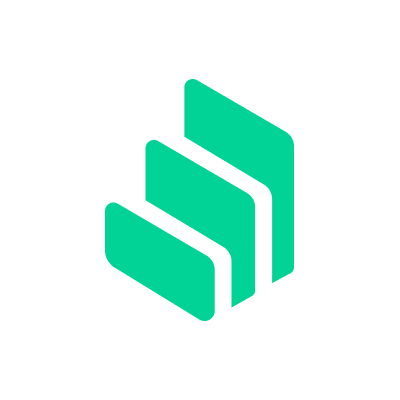
Compound is another popular DeFi lending and borrowing platform that operates on Ethereum. It allows users to lend and borrow a variety of digital assets, including Ethereum, Dai, and USDC. Compound uses a system of algorithmic interest rates, which are determined by supply and demand on the platform.
Another feature of Compound is the ability for users to earn COMP, the platform’s native governance token, by lending or borrowing assets. The more assets a user lends or borrows, the more COMP they can earn. COMP holders also have the ability to vote on platform governance decisions, such as adding new assets or changing interest rate models.
Compound also offers users the ability to trade assets directly on the platform through a feature called “cTokens,” which are ERC-20 tokens that represent the underlying asset that is lent or borrowed.
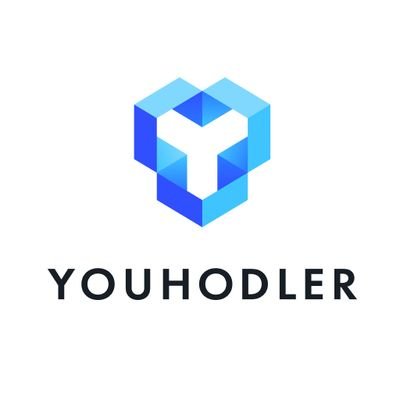
YouHodler is a DeFi lending platform that specializes in lending and borrowing fiat currencies, such as USD, EUR, and GBP, using cryptocurrencies as collateral. It offers high loan-to-value (LTV) ratios, allowing users to borrow up to 90% of the value of their collateral. The platform also offers a range of other services, such as exchange and savings accounts.
One of the unique features of YouHodler is its Multi HODL tool, which allows users to take out a loan and use the funds to invest in various cryptocurrency portfolios, ranging from conservative to aggressive. This allows users to potentially increase their cryptocurrency holdings while still being able to access funds for their immediate needs.

Uniswap is a decentralized exchange (DEX) that allows users to trade a wide variety of digital assets. It uses a unique system of automated market makers (AMMs) to facilitate trading, and it offers high liquidity and low trading fees.
One of the key features of Uniswap is its use of liquidity pools. These pools are made up of pairs of tokens, and users can contribute to them by depositing equal amounts of each token. In exchange for providing liquidity, users receive a portion of the trading fees generated by the pool.
Uniswap has also spawned a thriving ecosystem of third-party applications and integrations. For example, users can leverage Uniswap liquidity pools to provide liquidity to other DeFi protocols or to earn yield through liquidity provision incentives.
The future of DeFi lending looks promising, as the sector continues to grow and mature. With the increasing popularity of DeFi lending protocols, such as Aave, Compound, and MakerDAO, the space is attracting more attention and investment from both institutional and retail investors.
One of the main advantages of DeFi lending is that it offers a more accessible and transparent alternative to traditional banking and lending services. As the technology continues to improve and become more user-friendly, it is likely that more people will start to use DeFi lending as a viable alternative to traditional lending.
Moreover, the growth of DeFi lending is also contributing to the democratization of finance, as it enables users to access financial services without the need for intermediaries or gatekeepers. This could potentially empower millions of people who are currently excluded from the traditional financial system, such as those in developing countries or without access to traditional banking services.
As the DeFi lending ecosystem continues to evolve, we can expect to see more innovation and competition in the space. New lending protocols and platforms are likely to emerge, offering unique features and benefits to users.
Additionally, the integration of DeFi lending with other DeFi services, such as asset management and insurance, could provide a more comprehensive and efficient financial system for users. This would allow for greater flexibility and customization in the services offered, as well as potentially lower costs and fees for users.
DeFi lending represents a significant disruption to traditional lending systems, offering a more accessible, transparent, and user-friendly alternative. By leveraging blockchain technology, DeFi lending protocols allow for peer-to-peer lending and borrowing, removing the need for intermediaries and enabling greater efficiency and cost savings.
Moreover, DeFi lending is helping to democratize finance by empowering people who are currently excluded from the traditional financial system. As the sector continues to grow and mature, we can expect to see more innovation, competition, and integration with other DeFi services.
However, there are also challenges that need to be addressed, such as scalability, security, and regulatory compliance. The DeFi lending ecosystem will need to work together to address these challenges in order to continue to grow and provide valuable services to users.
Overall, DeFi lending represents a promising future for the financial sector, and its continued growth and evolution will likely have a significant impact on the way we access and use financial services in the years to come. Contact our Blockchain Experts and start exploring the world of DeFi lending.